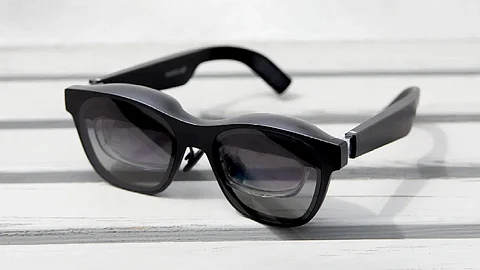
- NEWS
- the EDIT
- COMMENTARY
- BUSINESS
- LIFE
- SHOW
- ACTION
- GLOBAL GOALS
- SNAPS
- DYARYO TIRADA
- MORE

Smart glasses are an exciting leap forward in wearable tech, especially for people who are hearing-impaired. These innovative devices not only improve visual experiences but also help make everyday communication and accessibility much easier.
Imagine attending a family gathering where conversations flow freely without the fear of missing important exchanges. These smart glasses bridge that gap, enhancing interactions in various settings, from casual meetups to formal meetings. The convenience they provide allows users to maintain eye contact while engaging in discussions, making for a more natural communication experience.
The glasses also incorporate noise-canceling technology, ensuring that background sounds do not interfere with the clarity of the captions displayed. This is particularly useful in crowded environments, where distractions can diminish the effectiveness of traditional communication methods.
Key Features
Smart glasses are designed with the user in mind, offering an array of functionalities that cater specifically to accessibility needs. A few of their core features include:
1. Real-Time Captioning: Smart glasses can connect with speech-to-text apps to provide real-time captions during conversations. This lets hearing-impaired users read what others are saying while still maintaining eye contact, making conversations more natural and engaging.
2. Video Relay Services: Many smart glasses support video calls, allowing users to quickly connect with sign language interpreters. This feature is especially helpful in social situations or professional settings where communication needs to flow smoothly.
3. Augmented Reality (AR) Notifications: These glasses can display important notifications, like incoming calls or messages, right in front of the user. That way, they don’t have to rely on sound alone to stay updated.
4. Visual Enhancements for Social Interactions: Smart glasses can even project visual cues or emojis during conversations, helping to express emotions and reactions more clearly. This feature adds another layer to social interactions, making them more lively and expressive.
5. Accessibility Options: The glasses can be adjusted for personal preferences, like changing the text size or contrast for easier reading. These small but important customizations make the glasses more user-friendly for the hearing-impaired community.
The Future of Smart Glasses
Innovations in smart glasses are going beyond just providing captions. Companies are constantly improving these devices, making sure they’re not only functional but also stylish. With advances in digital display technology, smart glasses are becoming more versatile, offering personalized features like adjusting the size and position of captions for better visibility.
Collaborations between tech companies and eyewear brands are also leading to more fashionable designs that suit consumer preferences. The days of bulky, unattractive devices are behind us—today’s smart glasses are sleek and wearable, blending practicality with style.
Potential Applications
Smart glasses could have a big impact in many areas of life for hearing-impaired people:
• Education: In classrooms, students can use real-time captions to follow lectures more easily, ensuring they don't miss key information.
• Healthcare: During medical appointments, smart glasses can provide captions for conversations, helping patients communicate more effectively with their doctors.
• Social Gatherings: At social events, the glasses enable users to engage in group conversations more naturally, making them feel more connected and included.
Smart glasses are changing the way hearing-impaired individuals experience communication, bridging the gap between what they see and hear. As the technology continues to evolve, these devices will likely become essential tools for improving accessibility and enhancing everyday interactions across a wide range of settings.
